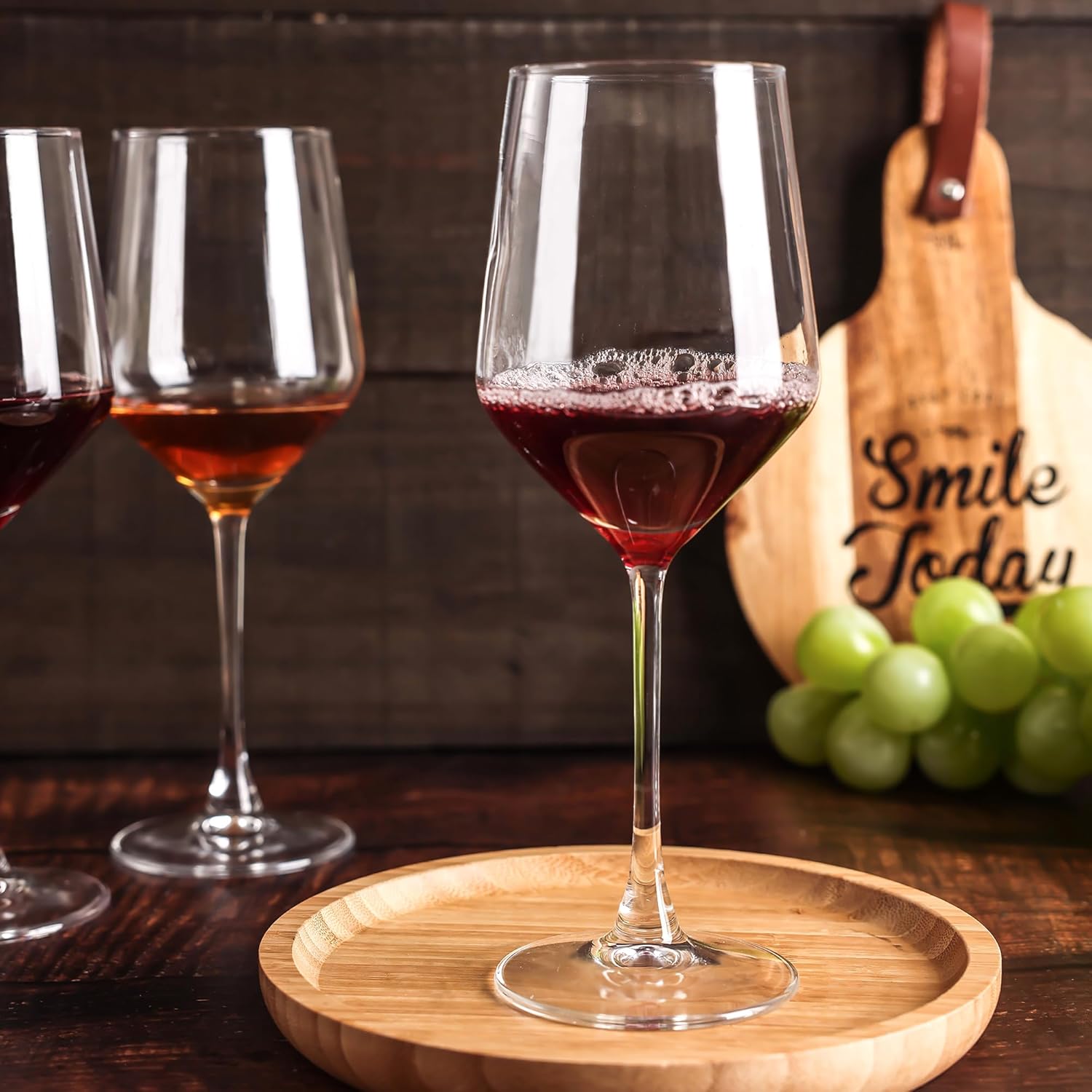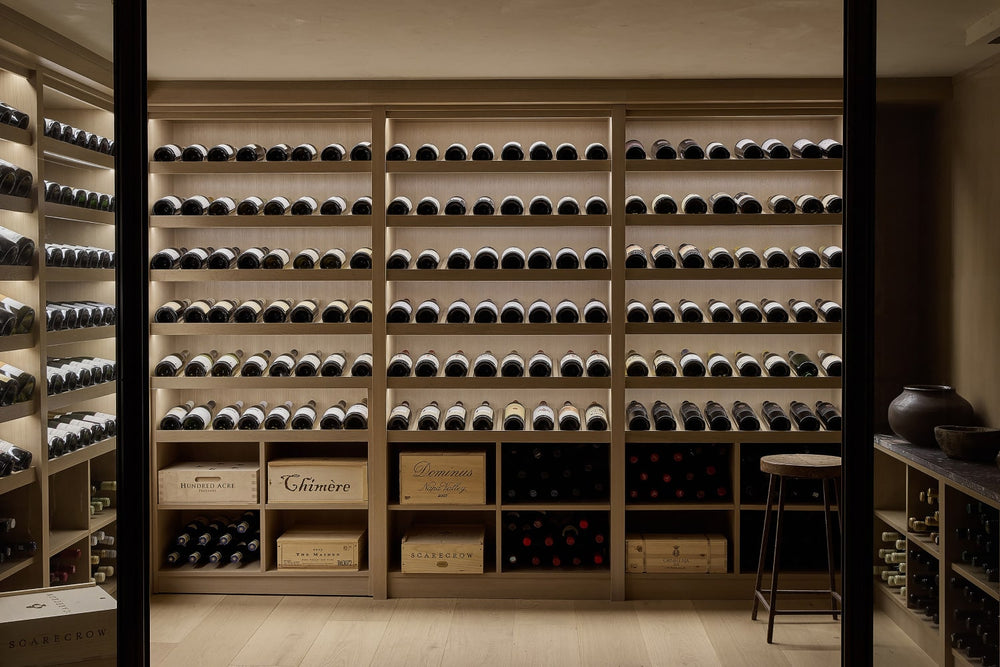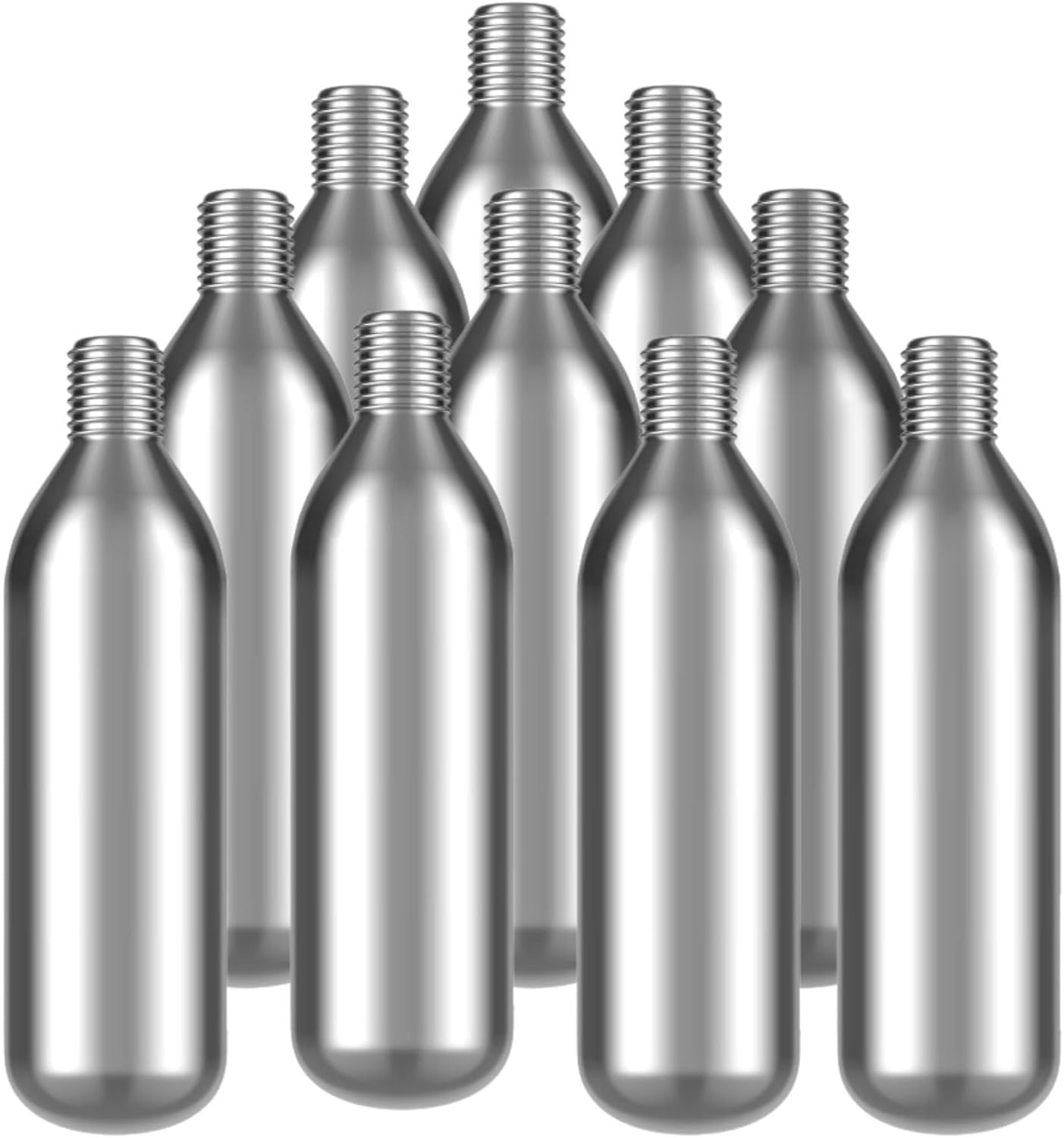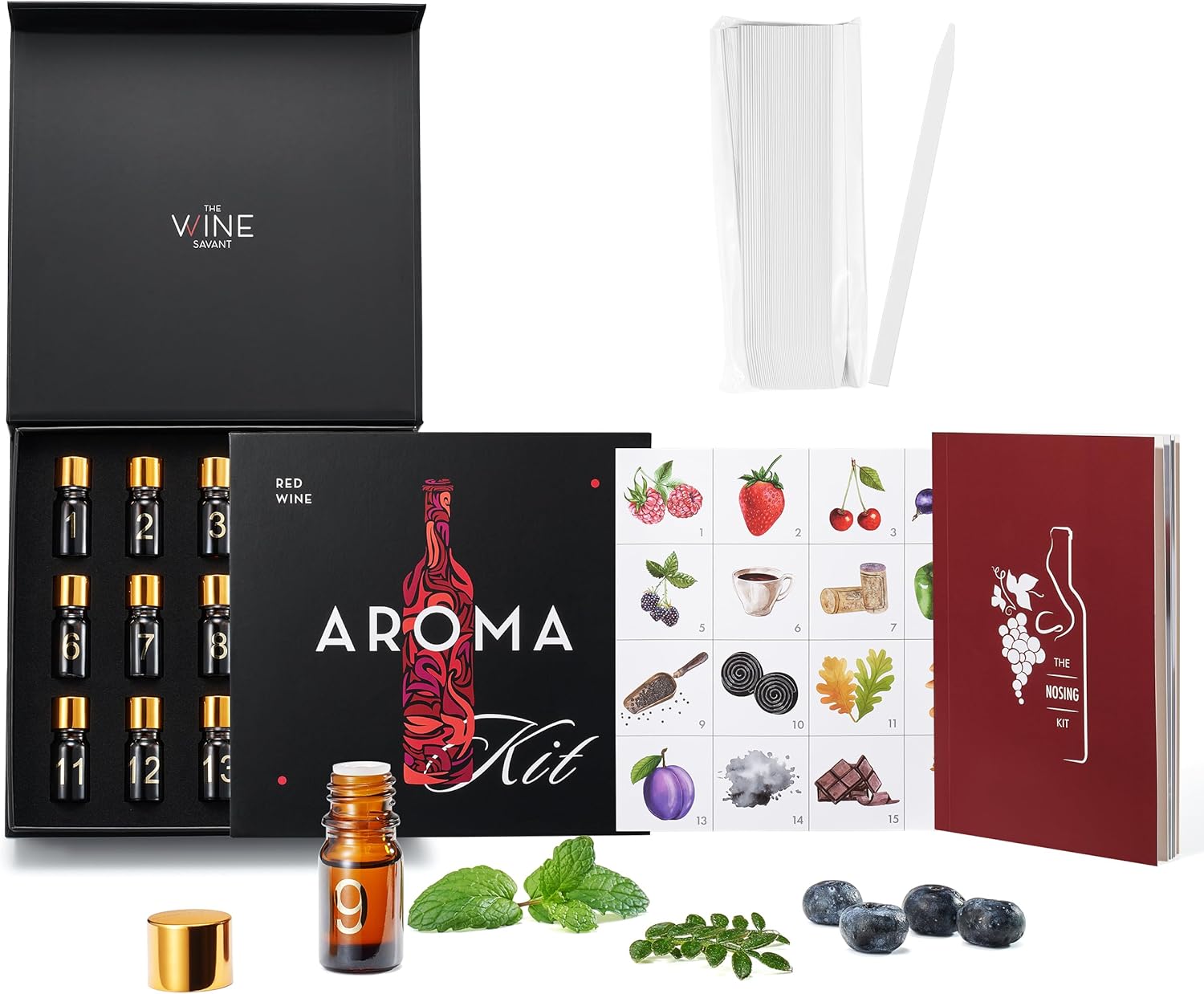Coravin vs. Repour: The Ultimate Showdown of Wine Preservation
It’s the timeless dilemma of every wine lover: you crave just one perfect glass of that special Cabernet Sauvignon on a Tuesday night, but you hesitate. Opening the bottle means starting a countdown. A race against oxidation that threatens to turn your beautiful wine into a shadow of its former self by tomorrow. For decades, we’ve battled this foe with flimsy vacuum pumps and crossed fingers. But today, two champions have emerged, each with a radically different approach to keeping wine fresh: the high-tech Coravin and the brilliantly simple Repour. Which one truly deserves a place in your kitchen? We put them to the ultimate test to find out.
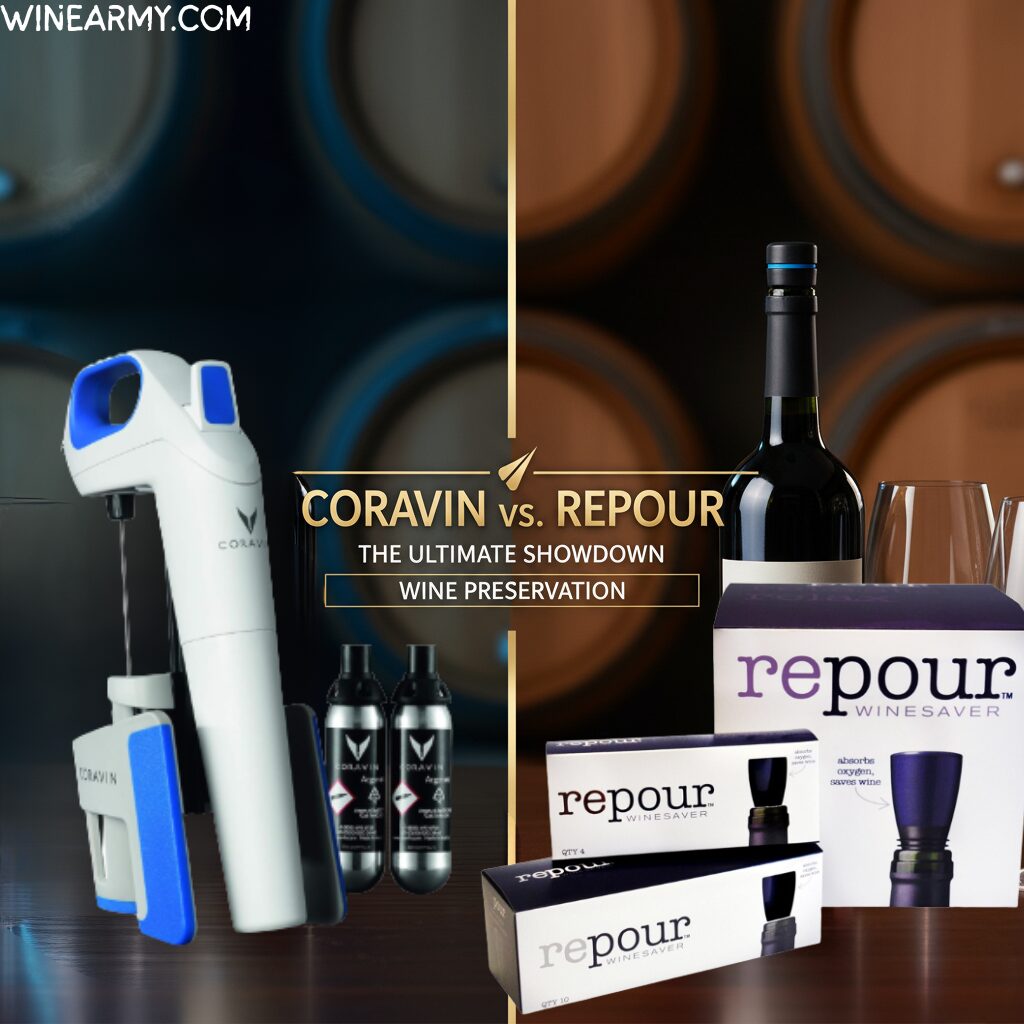
The ‘One Glass’ Fallacy: How I Stopped Wasting My Best Wines
I used to have two categories of wine at home: “weekday wine” and “weekend wine.” Weekday wines were the affordable bottles I wouldn’t feel guilty about if I didn’t finish them. Weekend wines were the special, expensive bottles I’d been saving. The problem was, I often wanted to drink the *good* wine during the week, but couldn’t justify opening a $50 bottle for a single glass. So, my best bottles would sit on my rack, gathering dust, waiting for a “special occasion” that might never come. It felt like I was saving my best life for later.
This all changed when I started seriously exploring wine preservation. I wanted to break the “one bottle, one night” rule. I started with vacuum pumps, but was always disappointed. Then I discovered Coravin and Repour. Suddenly, I could have a glass of that cellar-worthy Napa Cab on Monday and know it would be just as good on Friday. I could sample a delicate, unfiltered bottle of organic wine without committing to the whole thing. It was liberating. It completely changed my relationship with wine, turning every night into a potential “special occasion.” This guide is for anyone who wants to stop saving their best wine and start enjoying it.
The Science of Spoilage: Understanding the Enemy
Before we can judge the soldiers, we must understand the war. The enemy of wine is oxygen. The moment you pull a cork, oxygen rushes into the bottle and begins a process called **oxidation**. Initially, this is a good thing—it’s what allows a wine to “open up,” releasing its complex aromas. But give it too much time, and oxygen becomes destructive. It attacks the delicate phenolic compounds that give wine its flavor, aroma, and color. The vibrant fruit notes fade, replaced by dull, nutty, or bruised-apple flavors. Eventually, bacteria called Acetobacter use the oxygen to convert the alcohol into acetic acid, literally turning your wine into vinegar.
To understand these processes better, check out our wine terminology guide. The goal of any preservation system is to limit the wine’s exposure to oxygen as much as possible, thereby dramatically slowing down this inevitable decay.
Our two contenders fight this battle in completely different ways:
- The Coravin Method (Displacement): Coravin’s philosophy is to never let a significant amount of oxygen into the bottle in the first place. It uses a needle and inert gas to create a closed system.
- The Repour Method (Absorption): Repour accepts that the bottle has been opened and oxygen is present. Its philosophy is to aggressively remove that oxygen from the bottle after it’s been sealed.
The Contenders: In-Depth Reviews and Analysis
1. The Coravin System (The Surgical Strike)
The Coravin is a marvel of engineering, a high-tech solution that feels like something out of a science fiction movie. The flagship “Timeless” system allows you to pour wine *without ever removing the cork*. It works by piercing the cork with a very thin, hollow medical-grade needle. As you tilt the bottle to pour, the system injects pure, inert Argon gas from a small capsule. Because Argon is heavier than air, it displaces the wine being poured and forms a perfect protective blanket over the remaining wine in the bottle. When you remove the needle, the natural elasticity of the cork reseals the hole, and the wine inside never knows it was touched.
The “Pivot” system is a more accessible version for everyday wines. You replace the cork or screw cap with a special Pivot stopper. The device then inserts through the stopper to pour and inject Argon, keeping the bottle perfectly preserved for up to four weeks. It’s an amazing piece of technology and one of the ultimate wine cellar essentials for any serious collector.
Who is this best for?
The serious wine collector, the connoisseur who wants to sample their aging wines over time, or anyone who frequently enjoys high-end bottles and wants the absolute longest preservation possible.
- Unmatched long-term preservation (months to years)
- Allows you to pour wine without pulling the cork
- Lets you sample and track the evolution of a single bottle
- Works with screw caps (with accessory)
- Feels and looks incredibly impressive
Pros
- Very high initial investment
- Ongoing cost of proprietary Argon gas capsules
- Has a slight learning curve to use correctly
- Not suitable for sparkling wines
Cons
2. The Repour Wine Stopper (The Silent Guardian)
If Coravin is the high-tech surgical laser, Repour is the brilliantly simple, low-tech solution that just works. From the outside, it looks like a simple plastic bottle stopper. But inside that stopper is a special material that actively absorbs oxygen. The science is straightforward: when you pour your glass of wine and replace the cork with a Repour stopper, the material inside immediately begins to bind with all the free oxygen in the bottle’s headspace, removing it from the equation. It continues working until there is virtually no oxygen left to damage the wine.
There are no buttons, no needles, no gas capsules. You simply use it like a regular stopper. Each Repour stopper is designed to absorb all the oxygen from one 750ml bottle. This means you can pour a glass, seal it with Repour, open it again a few days later, pour another glass, and seal it again. It will keep working until its oxygen-absorbing capacity is used up. It’s a fantastic tool for enjoying the best affordable wines without the pressure to finish the bottle quickly.
Who is this best for?
The everyday wine drinker who typically finishes a bottle within a week or two and wants a foolproof, affordable, and highly effective way to prevent waste.
- Incredibly simple to use—just a stopper
- Very affordable per use
- Highly effective at preserving wine for days or weeks
- No ongoing hardware or gas costs
- Small and easy to store or travel with
Pros
- Each stopper is single-use per bottle
- Does not prevent the initial rush of oxygen upon opening
- Less “wow factor” than a Coravin
Cons
Head-to-Head: The Ultimate Taste Test Showdown
Reviews and specs are one thing, but the only thing that matters is how the wine tastes. To find a definitive winner, I conducted a multi-week, side-by-side experiment. I took three identical bottles of a quality, mid-range Cabernet Sauvignon.
- Bottle A (Control): Opened, poured one glass, and re-corked with its original cork.
- Bottle B (Repour): Opened, poured one glass, and sealed with a fresh Repour stopper.
- Bottle C (Coravin): Poured one glass using the Coravin Pivot system (to simulate a typical “open bottle” scenario).
All three bottles were stored under ideal conditions, following the best practices for how to store wine at home. I then tasted a small sample from each bottle on Day 3, Day 7, and Day 14.
The Results
- Day 3: The **Control** bottle was already showing signs of fading, the fruit notes becoming dull. Both the **Repour** and **Coravin** bottles were nearly indistinguishable from a freshly opened bottle—vibrant, aromatic, and fresh.
- Day 7: The **Control** bottle was clearly oxidized and unpleasant. The **Repour** bottle was still tasting remarkably fresh, perhaps losing just a tiny bit of its aromatic intensity but otherwise excellent. The **Coravin** bottle was, for all intents and purposes, perfect.
- Day 14: The **Repour** bottle was still drinkable but had lost a significant amount of its character, tasting a bit flat. The **Coravin** bottle was still holding strong, tasting almost as good as it did on Day 1.
| Feature | Coravin | Repour |
|---|---|---|
| Preservation Method | Inert Gas (Argon) Displacement | Oxygen Absorption |
| Effective Timeframe | Weeks, Months, even Years (Timeless) | Days to 2-3 Weeks |
| Ease of Use | Requires a short learning curve | As easy as using a bottle stopper |
| Initial Cost | High ($100 – $400+) | Very Low (~$10 for a pack) |
| Ongoing Cost | Argon Capsules (~$8-10 each) | New stopper for each new bottle (~$2-3) |
| Best For | Sampling fine/aged wines, long-term preservation | Finishing a bottle over several days or a week |
| Versatility | Works on corks and screw caps (with accessory) | Works on any standard 750ml bottle |
The Final Pour: Which Preserver Is Right for You?
After weeks of testing, the conclusion is crystal clear: this isn’t a case of one being “better” than the other. It’s about choosing the right tool for the right job. Your choice between Coravin and Repour should depend entirely on how you drink wine.
Choose Coravin If…
- You collect fine or age-worthy wines.
- You want to sample a wine without committing to opening it.
- You want to track a single bottle’s evolution over months or years.
- You value the ultimate in preservation technology and are willing to pay for it.
- You’re looking for one of the best wine gift ideas for a serious connoisseur.
Choose Repour If…
- You typically finish a bottle within 1-2 weeks.
- You want an affordable, no-fuss solution.
- You value simplicity and effectiveness over high-tech gadgets.
- You often open good-quality, everyday drinking wines.
- You need a simple accessory for hosting, making it one of the top wine accessories every host needs.
For my household, the answer is to own both. I use my Coravin Timeless for my small collection of special bottles in my modular wine rack, allowing me to taste them whenever the mood strikes. But for the vast majority of bottles I open—the exciting finds from my wine subscription box or a nice bottle I plan to enjoy over a few weeknights—Repour is my go-to. Its simplicity and effectiveness are game-changing for everyday wine drinking.
Ultimately, both Coravin and Repour are fantastic tools that solve the age-old problem of wine waste. They empower you to drink better wine, more often, and on your own terms. So, stop being afraid to pull that cork. Your perfect glass of wine is waiting for you—tonight, and tomorrow.
Your Preservation Questions, Answered
How long does Coravin really preserve wine?
It depends on the system and the quality of the cork. For the **Timeless** system (with the needle), if the cork is high-quality and reseals properly, the wine can be preserved with almost no noticeable change for months, and in many cases, for years. For the **Pivot** system, the preservation is rated for up to 4 weeks, and our testing confirms this is very accurate.
How do you know if the Repour stopper is working?
Unlike a vacuum pump where you feel resistance, Repour works silently and passively. There is no visual or physical indicator. The proof is in the tasting. The material inside is formulated to absorb more than 100% of the oxygen in a 750ml bottle. If you use one stopper per bottle, you can be confident it’s working. If the wine still tastes fresh and lacks any of the flat, oxidized notes after 5-7 days, it has done its job perfectly.
Can I use these systems on sparkling wine?
No. Neither the standard Coravin nor Repour is designed for sparkling wine. The pressure inside a bottle of Champagne or Prosecco would be dangerous and would expel the stoppers. Coravin does make a separate, specialized “Coravin Sparkling” system, but the standard models and Repour are for still wines only.
Is Argon gas safe to have in my wine?
Yes, 100% safe. Argon is a natural, non-toxic, and completely inert gas that makes up almost 1% of the air we breathe every day. It doesn’t react with the wine in any way, which is precisely why it’s used. It simply sits on the surface of the wine, acting as a heavy shield that prevents oxygen from touching it. Many winemakers use Argon during the bottling process for the same reason.



